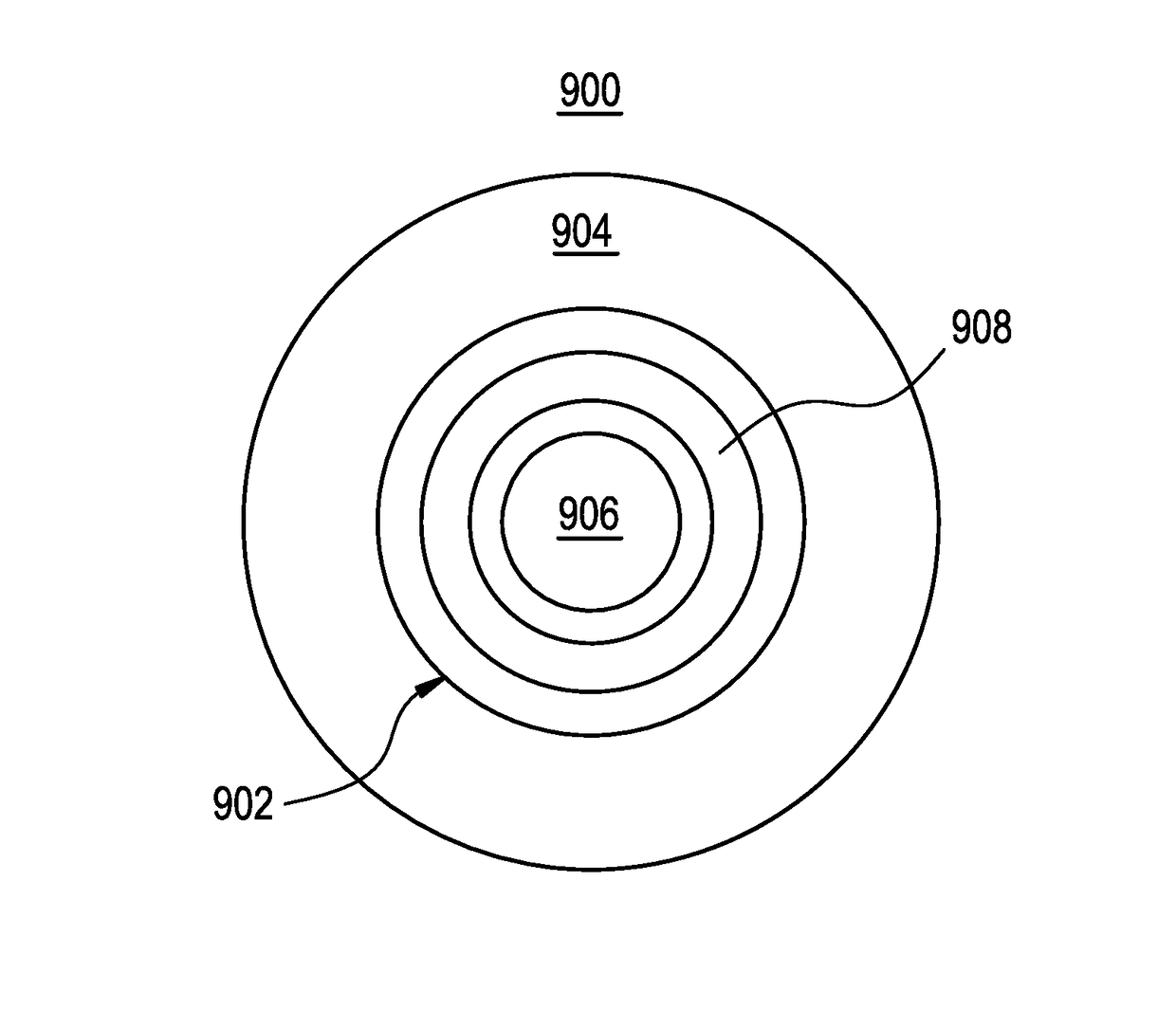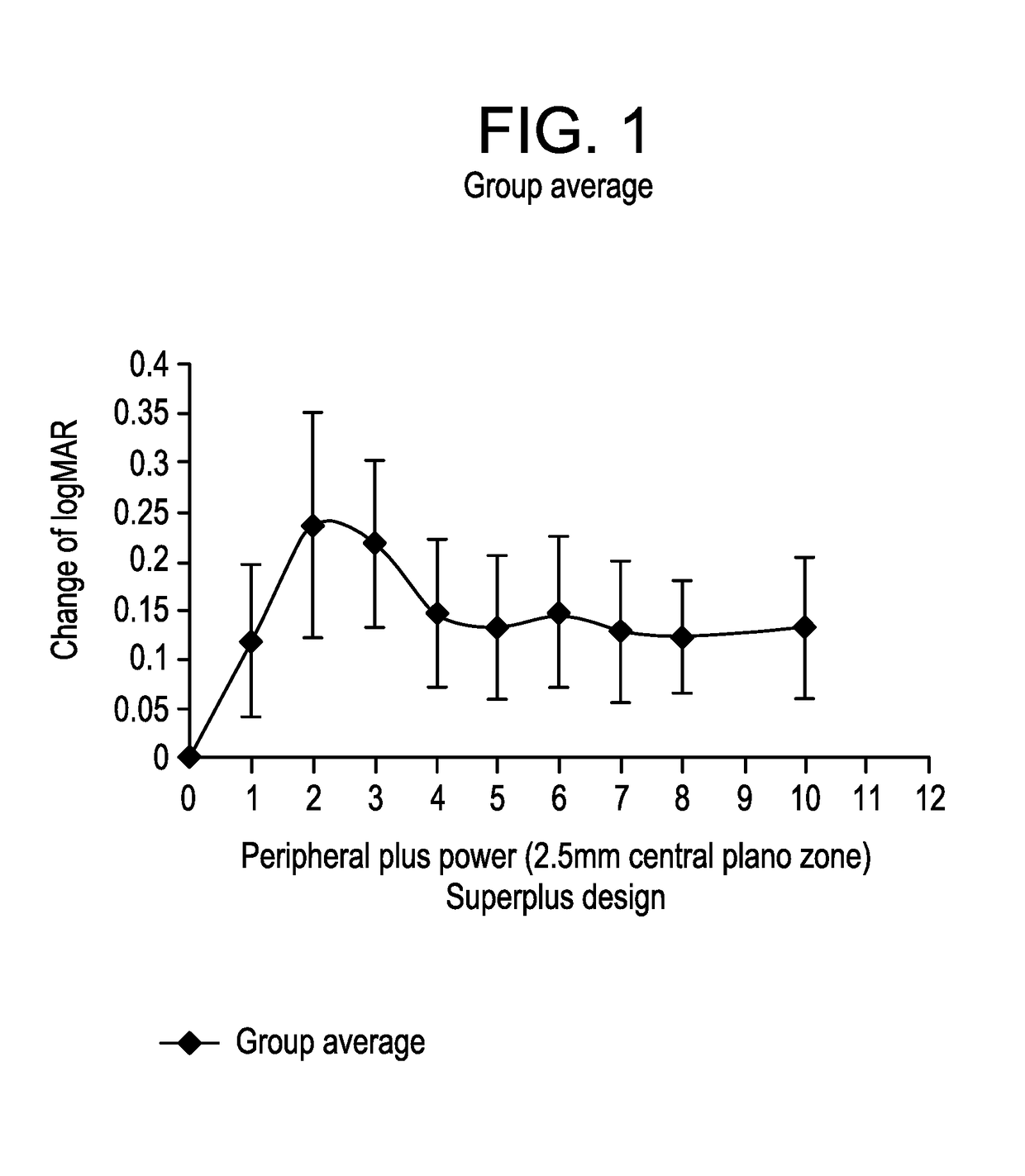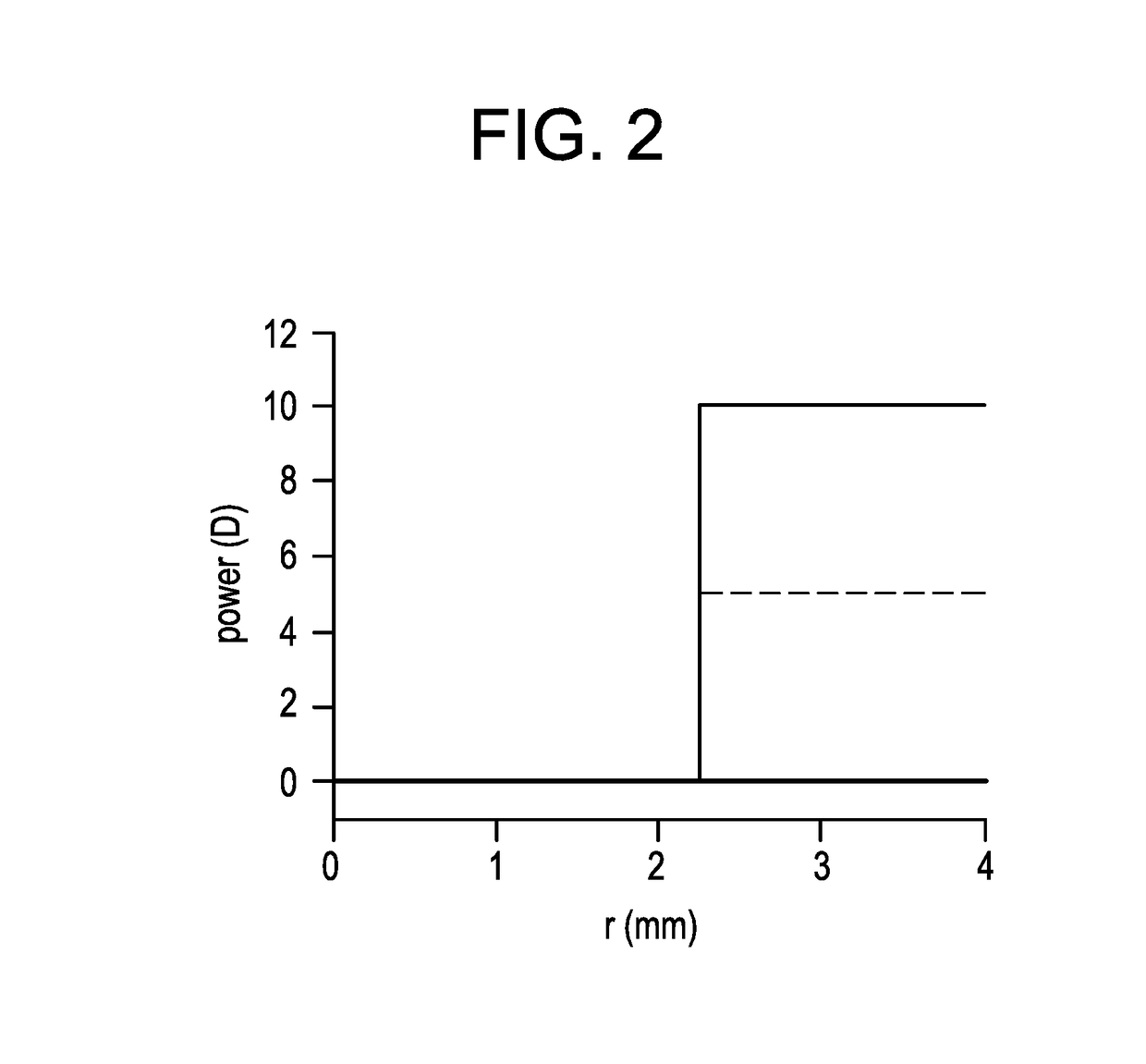High plus center treatment zone lens design and method for preventing and/or slowing myopia progression
- Summary
- Abstract
- Description
- Claims
- Application Information
AI Technical Summary
Benefits of technology
Problems solved by technology
Method used
Image
Examples
Embodiment Construction
[0048]In accordance with the present invention, an ophthalmic lens has at least one high plus or high ADD treatment zone surrounding a center zone for treating, preventing, or slowing myopia progression while also minimizing any halo effect at a black / white edge. In accordance with alternate exemplary embodiments, ophthalmic lenses are described with center plus designs and are described with respect to FIG. 10 and beyond.
[0049]With reference now to FIG. 5a (inset graph), five power profiles are illustrated: 1) a power profile having a +5.00 D treatment zone; 2) a power profile having a +10.00 D treatment zone; 3) two zig-zag or sawtooth power profiles with periodic power modulation between about +5.00 D and about +12 D; and 4) a power profile having a gradual power increase from +5.00 D to +12.00 D.
[0050]In the PSF cross section of FIG. 5a (main graph), the two ring spikes of the +5.00 D and +10.00 D ADD power profiles have a much higher intensity than the other three power profile...
PUM
 Login to View More
Login to View More Abstract
Description
Claims
Application Information
 Login to View More
Login to View More - R&D
- Intellectual Property
- Life Sciences
- Materials
- Tech Scout
- Unparalleled Data Quality
- Higher Quality Content
- 60% Fewer Hallucinations
Browse by: Latest US Patents, China's latest patents, Technical Efficacy Thesaurus, Application Domain, Technology Topic, Popular Technical Reports.
© 2025 PatSnap. All rights reserved.Legal|Privacy policy|Modern Slavery Act Transparency Statement|Sitemap|About US| Contact US: help@patsnap.com



